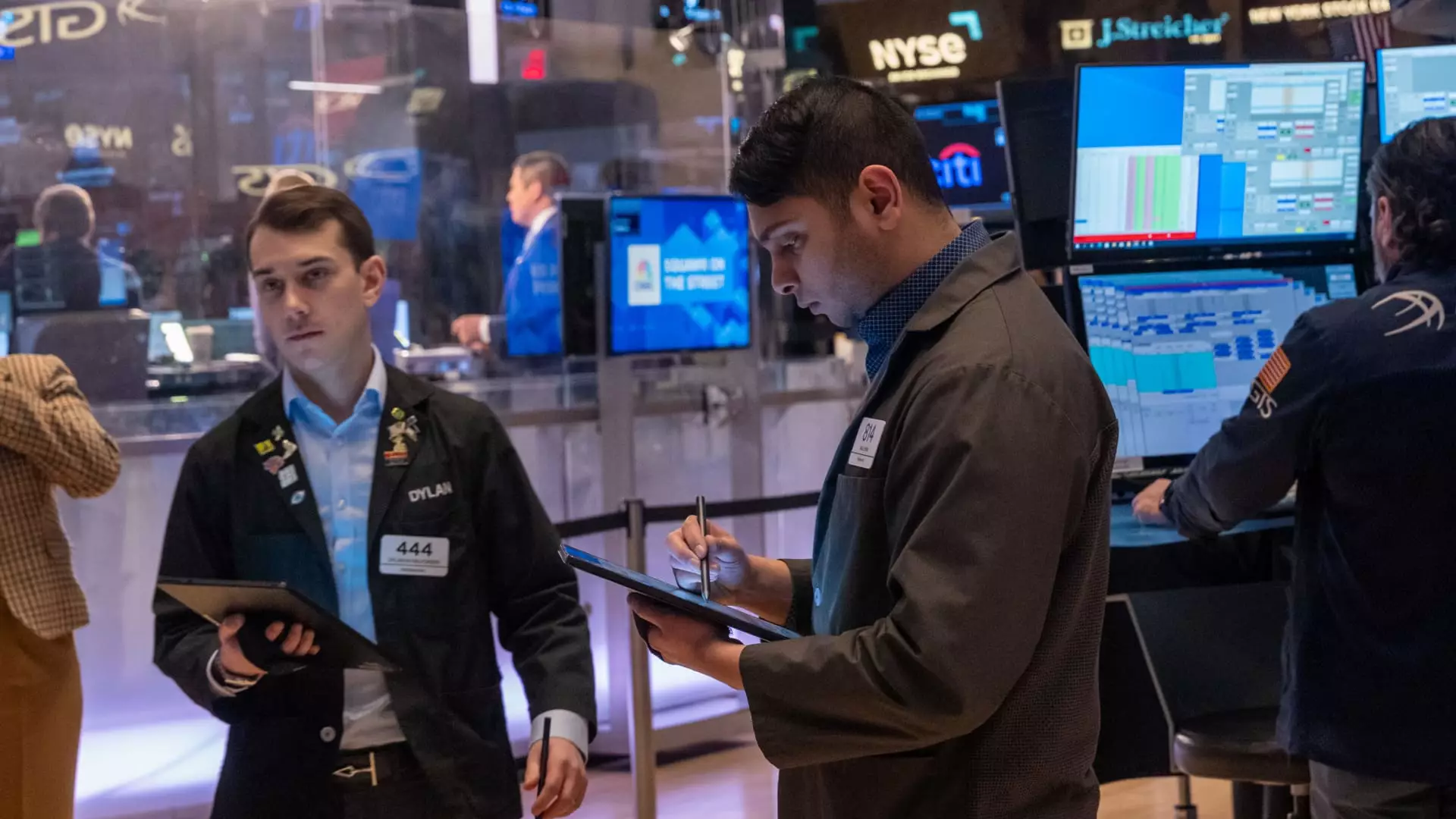In a world where economic indicators are akin to a magician’s tricks, the recent warnings from Mandy Xu of CBOE Global Markets should serve as a clarion call for investors. While it may seem instinctual to view stock market fluctuations through the lens of corporate resilience or value, the realities dictated by economic policy, particularly tariff implementation, are proving to be far more consequential. The bond market, which has often led the charge in reflecting impending economic uncertainty, has begun sending alarm bells. Yet, astonishingly, a staggering 73% of investors are collectively choosing to underappreciate the magnitude of this risk, opting instead for a more selective narrative that highlights perceived ‘winners’ in the market.
Mandy Xu recently articulated her perspective on how the stock market is still engrossed in deciphering President Trump’s tariff policies, dissecting the implications for various companies. The President’s decisions to impose duties of 25% on imports from Canada and Mexico, and an additional 10% on Chinese goods, are not merely political maneuvers—they represent seismic shifts that could reshape entire sectors. Yet, investors are caught in a dangerously optimistic tailspin, believing that specific companies can emerge triumphantly despite these ominous clouds. This is a dangerous chasm between perception and reality that cannot be ignored.
Despite Monday’s sharp sell-off, the overall market seems remarkably placid. The CBOE Volatility Index (VIX) surged 16%, indicating that while underlying anxiety is pervasive, a lack of panic in stock prices persists. This detachment from reality is symptomatic of denial, revealing a fundamental misunderstanding of the macroeconomic consequences entwined with these tariffs. The bond market’s increasingly severe tones are ringing louder than ever before, projecting apprehension about growth—or a lack thereof—that the stock market continues to shrug off.
The options market currently portrays tariffs as stock-specific catalysts rather than as macroeconomic troubles that could inflict damage across the entire spectrum. Xu pointed out that recent trading behaviors, including a surge in zero-days-to-expiration options, are reflective of a market striving for risk management amidst chaos. Yet, this hedging activity, far from an antidote to uncertainty, serves more as an indication that investors are aware of potential pitfalls yet collectively decide to maintain an optimistic facade.
The irony here is astounding. Investors are arming themselves for a battle with threats they can’t fully account for—hoping to hedge risks without truly grappling with the complexities involved. What this signifies is a growing detachment from the collective economic realities that could ultimately backfire. As investors push deeper into riskier territories, the false sense of security in choosing perceived “winners” morphs into a dangerous game of financial roulette.
As much as investors may wish to cherry-pick stocks that can withstand fluctuating tariffs, the broader implications are undeniable; a potential economic downturn awaits. Xu highlights the dual pressures from tariff-induced demand shocks coupled with government layoffs—these forces threaten the very foundation of consumer spending. The imminent U.S. Bureau of Labor Statistics employment report this February is set to unveil crucial data that could further mold investor sentiment, but the concern is whether investors are even prepared for its implications.
The hard truth is that policies ripple across demographics and sectors, and the illusion of selective resilience is simply a charade that none of us can afford to indulge in for long. Watching for consumer spending patterns and early employment trends will be paramount as investors navigate this tumultuous economic landscape. Those who continue to invest under the assumption that they can sidestep the repercussions of these tariffs are playing with fire—a fire that could explode and consume not only their portfolios but the entire market.
In this precarious environment, the question is not whether potential pitfalls exist, but how many investors will continue to turn a blind eye to the evident risks lurking just beneath the surface. The stakes are too high to ignore; the possibility of a broader market downturn is a reality that demands acknowledgment, not avoidance.

